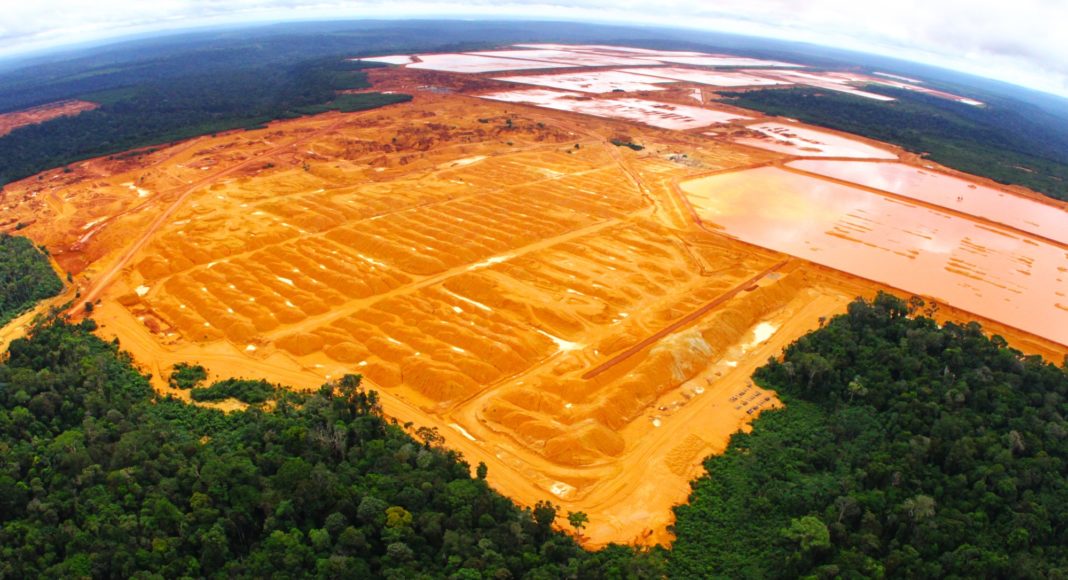- Norway gives billions to Brazil to save the rainforest. At the same time, Norsk Hydro’s operations lead to large emissions of greenhouse gases and the destruction of rainforests.
- NRK-2, TV Channel NRK-2 of the (government-owned) Norwegian Broadcasting Corporation published this article on 6 January 2019 about Norway’s double standards with respect to rainforests. You can read the original, in Norwegian, here.
- LAB partner Christian Aid works with quilombola communities affected by bauxite mining, especially in the Oriximiná area. You can read other related articles here and a four-part series here.
If you could see everything the mining has killed, you would want to cry. Nature is gone, we’ll never get it back — Aluizio Silverio dos Santos.It’s hard to imagine the devastation that the 78-year-old is trying to explain to us. Aluizio sits at a table under a tree. A woman with a child lies in a hammock and sleeps. We are hours by speedboat upstream of the Trombetas, a tributary of the Amazon River, in the state of Pará. A few simple houses are located on the slope down towards the river. The small settlement is surrounded by untouched nature. The silence is interrupted only by occasional sounds of wildlife. Everything seems harmonious.
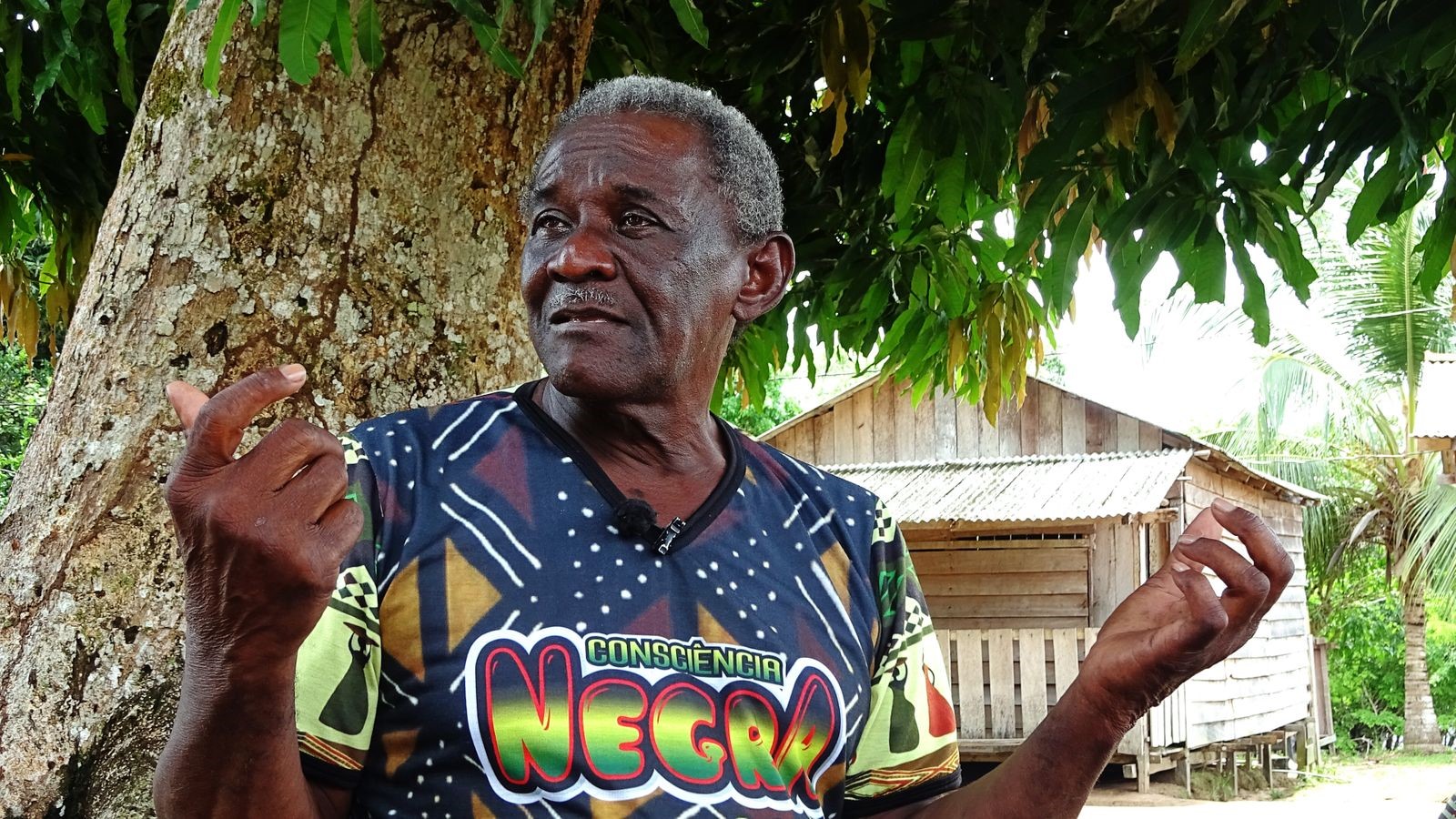
Towards ecological collapse
Authorities, companies and organizations must do more. Otherwise, we’ll lead the world to ecological collapse! –Ola Elvestuern, Norway’s Minister of Climate and EnvironmentElvestuern was reacting in summer 2018 to new figures showing a dramatic increase in the destruction of the world’s rainforests: every minute of 2017, an area corresponding to 40 football fields was cut down. Not least of the concerns is the continuing decline in the Amazon rainforest. Since 2008, Norway has paid Brazil over 8 billion krone (US$960 million) to save the same forest. ‘This is a very important climate measure. Preserving the rainforest is essential for us to be able to take care of the vast biodiversity that is preserved there.’ The Norwegian government highlights on its website why it is so important to give money to preserve the rainforest in Brazil. And in the same way successive Norwegian ministers argued for the rainforest billions since then Prime Minister Jens Stoltenberg launched the Norwegian idea during the UN Climate Change conference in Bali in December 2007. Saving the rainforest has been the Norway’s trump card at all climate conferences since Bali. Because the Amazon is the world’s lung, it takes up and stores the CO₂ with which human society has polluted the atmosphere.
Mining in the protected rainforest
Aluizio Silverio dos Santos points to the map that he has laid out over the table under the tree: ‘These are plateaus with mineral deposits of bauxite. And they are within our traditional lands.’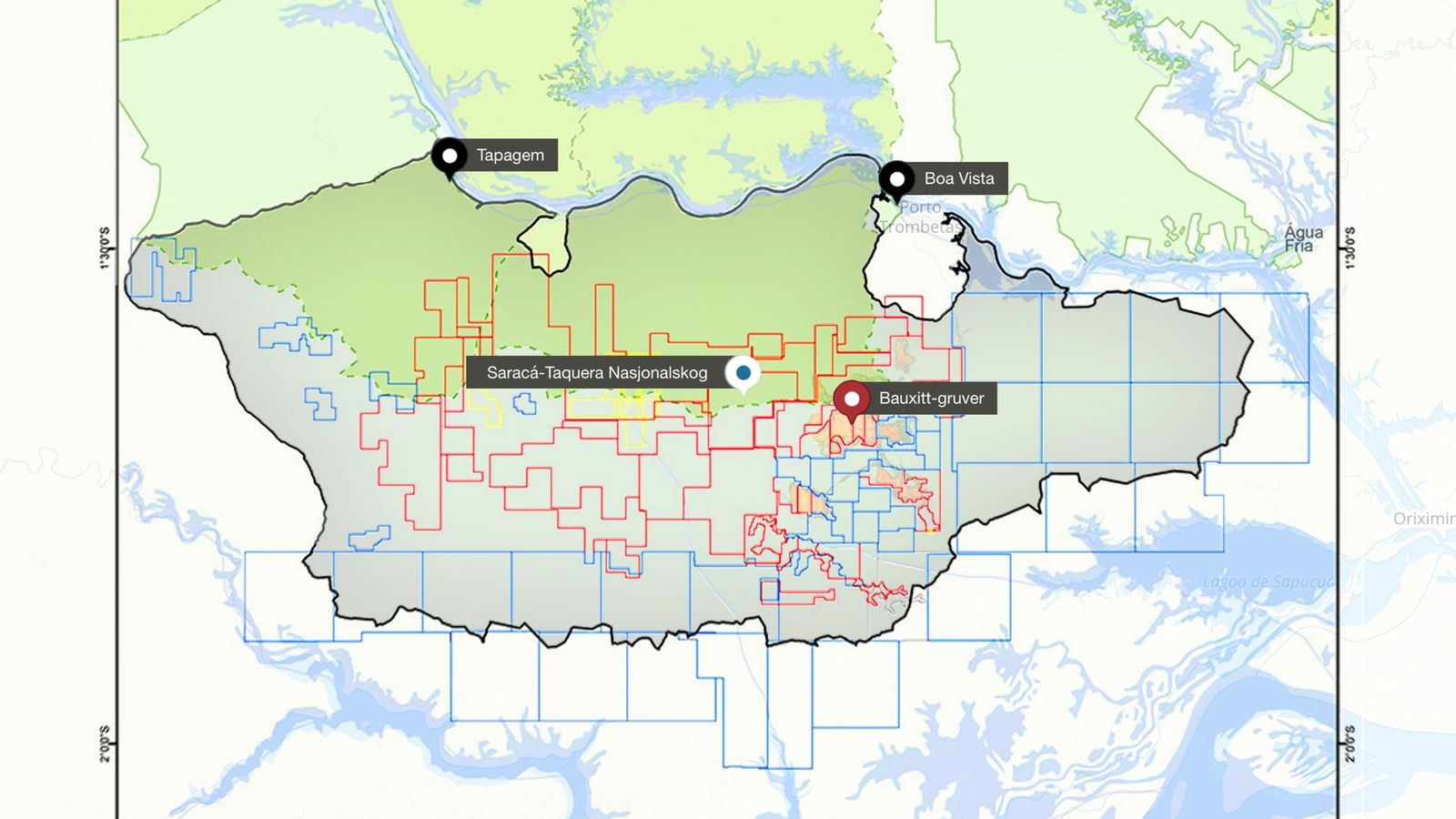
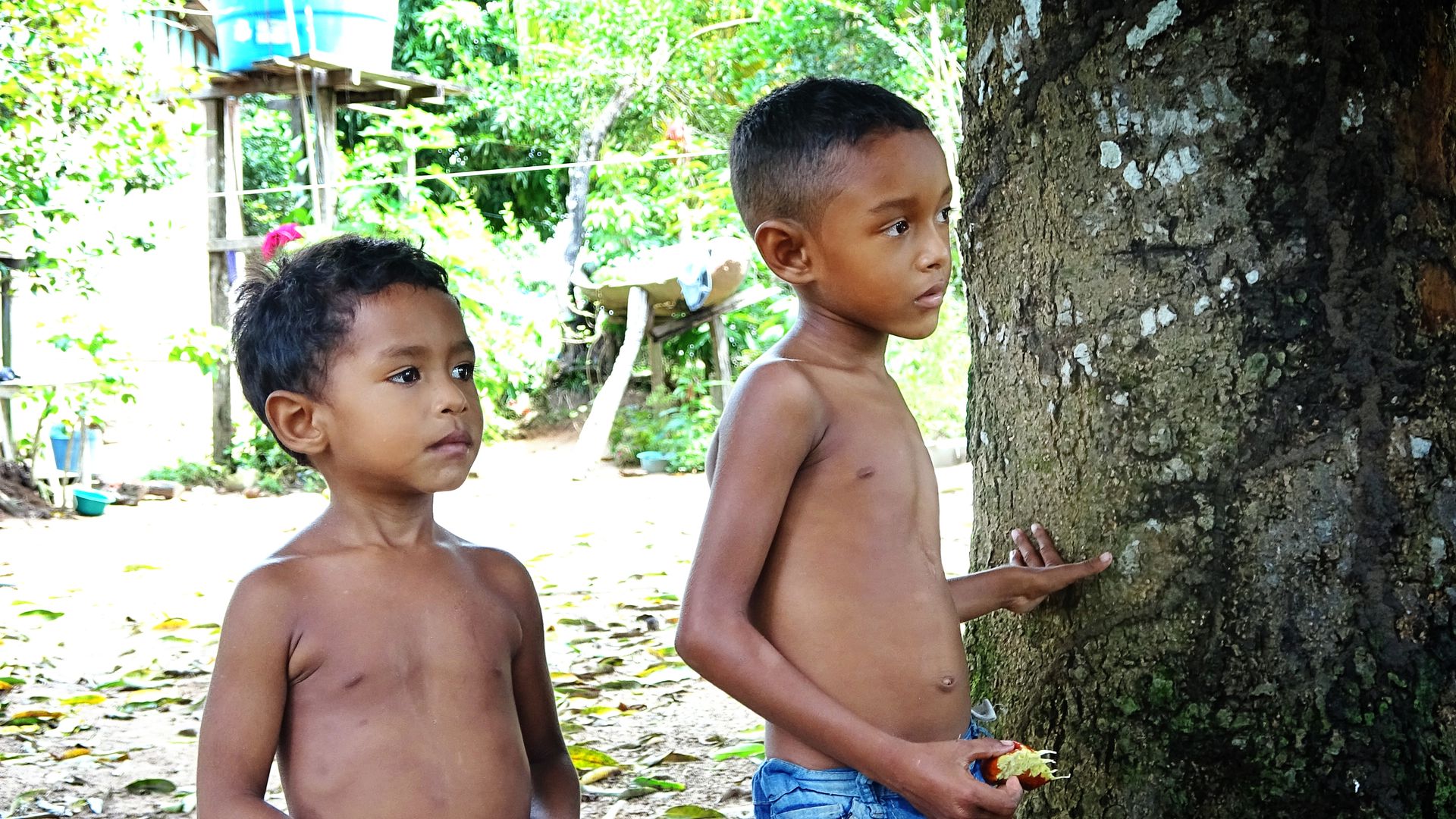
Saracá-Taquera National Forest Saracá-Taquera National Forest is categorized as a protected area under World Conservation Protection category VI: ‘Protected area with sustainable use of natural resources’. Category VI is characterized by the commitment to preserving ecosystems and habitats, as well as cultural values and the management of traditional natural resources. There are typically large areas that are largely untouched, but where some have sustainable, non-industrial utilization of natural resources to meet the needs of affected communities. Read more about this protection category on the World Nature Conservation website
Google Maps satellite images show how MRN’s mines have expanded. When mining operations started, Norsk Hydro held a five percent stake in MRN. But the Norwegian company has since 2011 secured control over 45 percent of all bauxite extracted in the mines. The Norwegian flagship company thus has a dominant role in the bauxite mines of MRN.
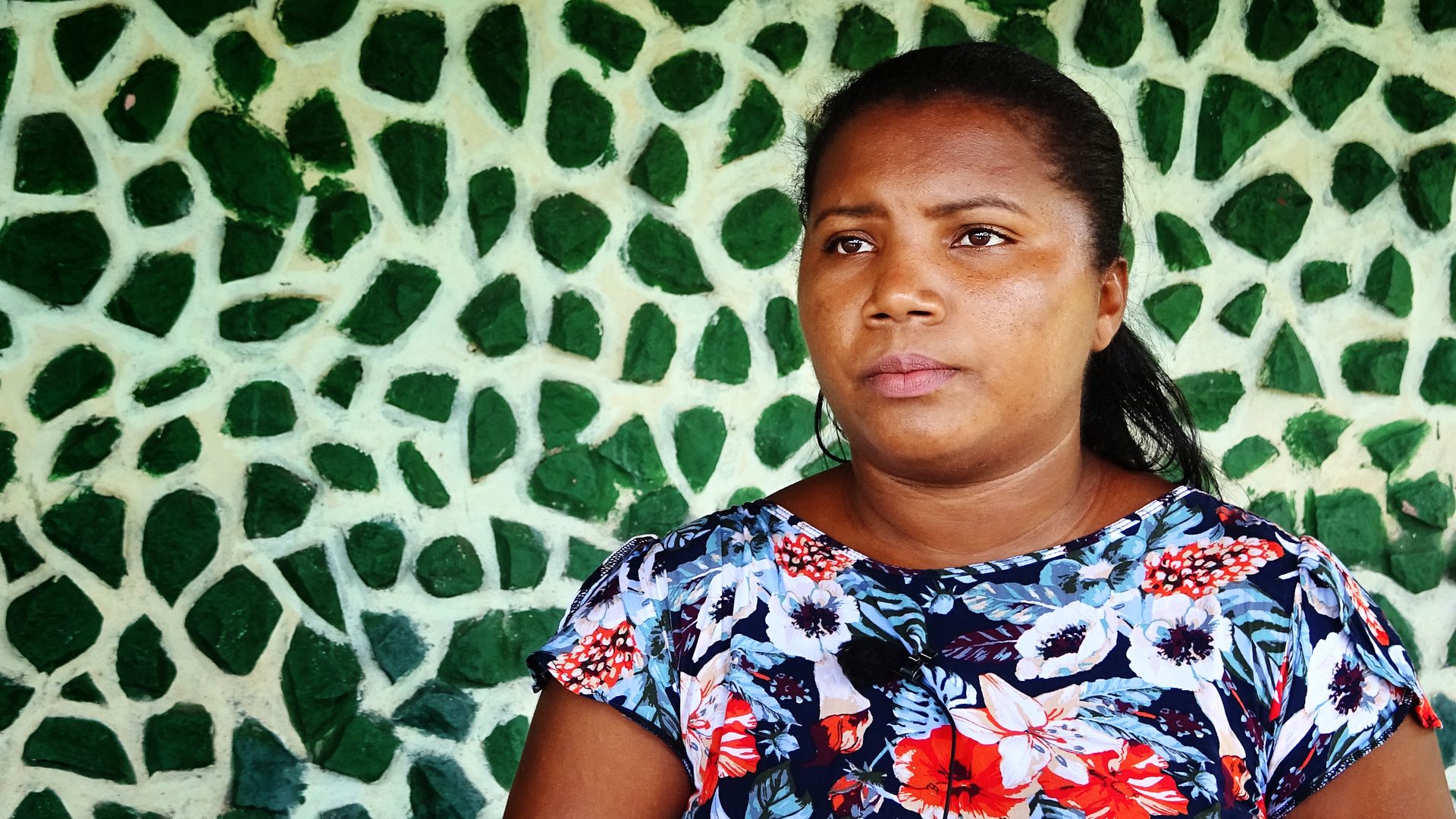
We are a small place on the map. It’s like we don’t exist. The state signs papers, but does not come to see our reality. They do not know how we live –Holgayd Costa de JesusNow Aluizio and his people are in Tapagem for a protest march. In 2013, new mining licenses were granted to MRN – all within the Saracá-Taquera National Forest, and wholly or partly within the traditional areas of the quilombola communities. The quilombolas have reacted with demonstrations and protest letters to the authorities. For several decades, they have been trying in vain to secure formal recognition of their land rights, even though the Brazilian constitution gives them that right. Yet the mining company was able, after the briefest of delays, to obtain permits to cut down more rainforest to extract the bauxite. The paradox, we are told by the quilombolas we meet, is that the authorities say they cannot recognize the land as this is not compatible with the protection of the rainforest. At the same time, the authorities give permission for mining which is based on the deforestation of the same protected forest. The partly state-owned Norsk Hydro will not answer questions that have to do with the quilombolas’ land rights. But the company has its opinions on mining in the rainforest. ‘MRN’s mines are located in the middle of a conservation area with pristine rainforest. How do you think this is compatible with saving the Amazon rainforest?’ ‘We argue that Brazilian authorities have regulated this area as a combination of nature reserve and bauxite extraction’, says John Thuestad. He is the head of Hydro Alunorte, the alumina refinery further east of the Amazon which receives the bauxite from MRN’s mines. Hydro also has wholly owned mines in Paragominas, which opened in 2007. ‘We do this in a responsible manner’, says Thuestad.
Nobody knows if the rainforest comes back
For Norsk Hydro responsible mining in the rainforest means replanting the areas after the bauxite is extracted. Both in Paragominas and Trombetas, systematic work is being done on this: after the forest is cut down, the soil is removed and set aside. Then the soil is replaced after the diggers have extracted the bauxite. The seeds that have survived in the soil, together with trees planted, are supposed to put the rainforest back in the large open wounds in nature. ‘We then take out the bauxite in a way that allows us to recreate the environment that was there before we started extraction’, says Thuestad. ‘Have you managed it?’ ‘To a large extent, I would say that we have done so’, responds the manager at Hydro Alunorte. Norwegian Hydro has received help from specialists in Brazil in the replanting project. Also from the University of Oslo where, however, they are not as certain as Norsk Hydro about the outcome. ‘Nobody knows if you can get back the original rainforest. There is no one who has worked with this long enough’, says former research director Fridtjof Mehlum at the Natural History Museum, UiO. For five years he has participated in a project financed by Norsk Hydro to map the diversity of species in the areas the company is mining in Paragominas. The length of time taken to replicate the diversity of a rainforest that is destroyed does not speak to Norsk Hydro’s advantage: ‘The rule of thumb is that it takes about 50 years before the biomass returns to its original. Then it takes around 100 years before the biological diversity of the plant life is back. And finally, maybe 150 years before the wildlife is back’, explains Mehlum. There is a vast gap between the time it takes to replicate the species diversity and the time required to cut down new areas of rainforest to get hold of the bauxite, the research director points out. ‘It will probably never be quite as it was’, Mehlum thinks.The tractors stood ready
Norway had already paid several rainforest billions to Brazil when the news broke in 2010: For staggering 30 billion krone (US$3.6 billion), Norsk Hydro took over the alumina and bauxite business of the Brazilian company Vale. The result was full control of Alunorte, the world’s largest alumina refinery. At the same time, Norsk Hydro also acquired the bauxite mines in Paragominas, as well as a 51 percent stake in the Albras aluminum plant. Hydro Alunorte and Albras are next door in Barcarena in the eastern Amazon. Rainforest had to give way when these facilities were built in the 1980s.I was seven years old when we had to leave our soil. The tractors were already there, ready to mow down our house and plants –Nazare Messias EspindulaNazare, now 44, and her family lived in the rainforest exactly where Hydro Alunorte is today. Along with many others, she and the forest had to make room for the industrial complex. However, new pieces of rainforest are taken each time the controversial red sludge deposits of Hydro Alunorte are expanded. And there is the smoke from the factory chimneys. While the Norwegian authorities are talking about improving the climate issue in Brazil, the smoke from the partly state-owned Norwegian company in the country testifies to the opposite.
Huge emissions
Figures for Hydro Alunorte, Albras, Paragominas and MRN are clear: in total, the emissions from these plants in 2017 totalled 6.47 million tonnes of CO₂. This corresponds to more than 12 per cent of the total emissions for the whole of Norway for the same year. ‘This is a huge discharge. This corresponds to emissions from nearly 2.6 million private cars in one year’, says member of parliament Lars Haltbrekken. Norwegian Hydro believes, on the other hand, that the company’s activities in Brazil are a blessing to the environment. Hydro Alunorte’s director highlights the recyclability of aluminium. And that aluminium makes cars lighter – and therefore needs less fuel. ‘If you look at the total accounts, aluminium is a contributor to reaching the planet’s climate goals’, says John Thuestad, who claims that projects are in hand to bring down emissions from Hydro Alunorte. ‘So then can we sacrifice some of the Amazon rainforest for Norsk Hydro’s total accounts?’ ‘We have chosen to be in the value chain based on Brazilian authorities’ desire to exploit bauxite resources. We believe we are a good and responsible partner to do it in the best possible way for us all’, Thuestad responds.Destroying conservation value
Haltbrekken, who for many years was the leader of the Norwegian Society for Nature Conservation before being elected to the Parliament, is surprised when he hears that Norsk Hydro extracts bauxite from Saracá-Taquera National Forest. ‘Mining in the protected areas is helping to destroy our conservation values’, says Haltbrekken. He does not believe that the areas where mining was already in progress when Saracá-Taquera National Forest was established in 1989 would have been protected if this had been in Norway. ‘But in Norway it probably wouldn’t be allowed to extend the mines into the rest of the protected areas. Therefore, Hydro should have been very cautious about entering these areas’, he says. MRN refused our request to visit and film in the bauxite mines. Also the mining company would not grant us an interview while we were in Trombetas. Afterwards, the company has not responded specifically to written questions we have sent. Instead, MRN wrote, in an e-mail to our production company, that they do not comment on views that do not represent those of the quilombolas’ official organizaitons, as the company has ‘frequent, open and respectful dialogue’ with them. MRN also asserted that the company follows Brazilian law strictly and is engaged in a number of projects in Trombetas concerned with education, culture, health and socio-economic development. We have asked the Ministry of the Environment for a comment, in light of Norway’s involvement in it, that Norsk Hydro’s operations in Brazil contribute to the felling of rainforest, but they referred us to the Ministry of Industry, which again referred us to Hydro. ‘The state’s role as a shareholder in Hydro and other companies is separate from the state’s other roles, such as authority or supervision’, says communication adviser Halvard Wensel in the Ministry of Trade and Fisheries.We will be heard
Twenty-six year-old Holgayd has finished the tour she has taken us on in Boa Vista. From one end of Boa Vista to the other mines can be seen. There are about twenty tailings dams inside the mining area where the sludge and waste from the mines has been collected. There is much fear that these dams could burst and cause a major accident, as has been the case in Brazil elsewhere. Now the time has come for us to part.

